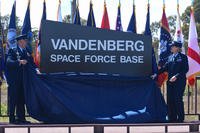CAMP PENDLETON, Calif. — Marine Corps Air Station Camp Pendleton is home to the Marine Aircraft Group 39, I Marine Expeditionary Force, which played a key role in support of Operation Iraqi Freedom and Operation Enduring Freedom over the past decade since 9/11.
Among its six AH-1W Super Cobra and UH-1N Huey light attack squadrons, three CH-46 Sea Knight squadrons and logistics squadron, is the Marine Light Attack Helicopter Squadron 169, which is slated to deploy to Afghanistan after an 18-month dwell time.
The squadron, equipped with AH-1W Super Cobra attack helicopters and UH-1Y utility helicopters, carries out its mission to support the Marine Air-Ground Task Force commander by providing offensive air support, utility support, armed escort and airborne supporting arms coordination, day or night under all weather conditions during expeditionary, joint or combined operations.
Capt. Brett Michaud, AH-1W Super Cobra pilot with HMLA-169, from Murrieta, Ga., said the Vipers are unique in their combined capabilities for close-air support, air-to air support and their utility capability. This allows the squadron to provide 360-degree defensive maneuvering and posture while the offensive capability is in the shoot and egressing.
Capt. Jacob Ashbolt, UH-1Y Huey utility helicopter pilot with HMLA-169, from Mishawaka, Ind., said the dwell time allowed the squadron to perform much-needed upgrades to its helicopters, which can be timely, but will prove essential to upcoming missions.
During previous years during war-time, the squadron was faced with a much more expeditious tempo, which called for less dwell time and more deployments among its Marines.
“Our last deployment was a full squadron out to Afghanistan for OEF 10.2 and 10.11.1,” Ashbolt said. “This one is definitely a lot different than the stint that the Vipers had. It’s definitely a new feeling having this much time to train up.”
Michaud joined the squadron in 2009, right before they came back from their first stint in Afghanistan. They had a 10-month dwell period and were right back at it doing what they were trained to do.
“We run ourselves into the dirt to make sure we provide the best amount of skill and training and bring the best to the fight,” Ashbolt said. “Downstairs, I have nothing but mad respect for those guys. They work their bones off getting the aircraft up and ready to meet the operations plan for training.”
Trained, rested and ready, the squadron is slated to take on two missions in the coming months when it goes split-force. A small contingent of the unit’s personnel will deploy to Afghanistan, while others gear up to deploy in support of the 31st Marine Expeditionary Unit.























